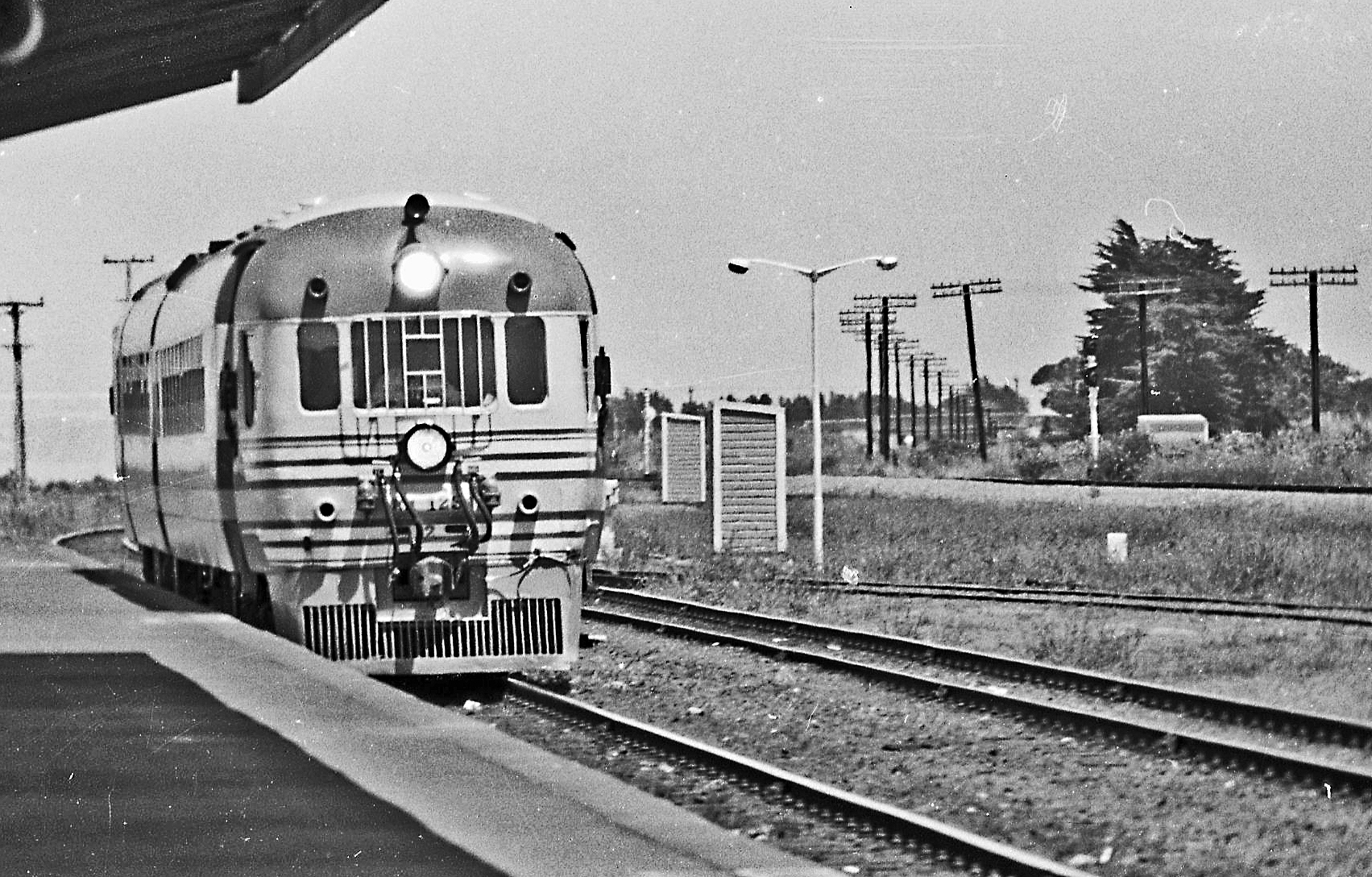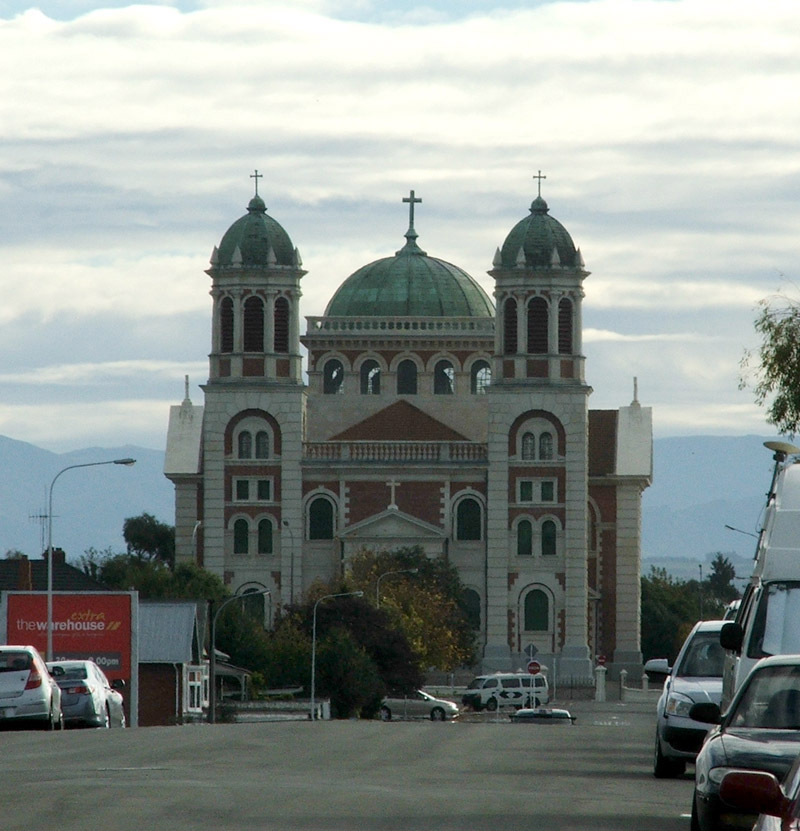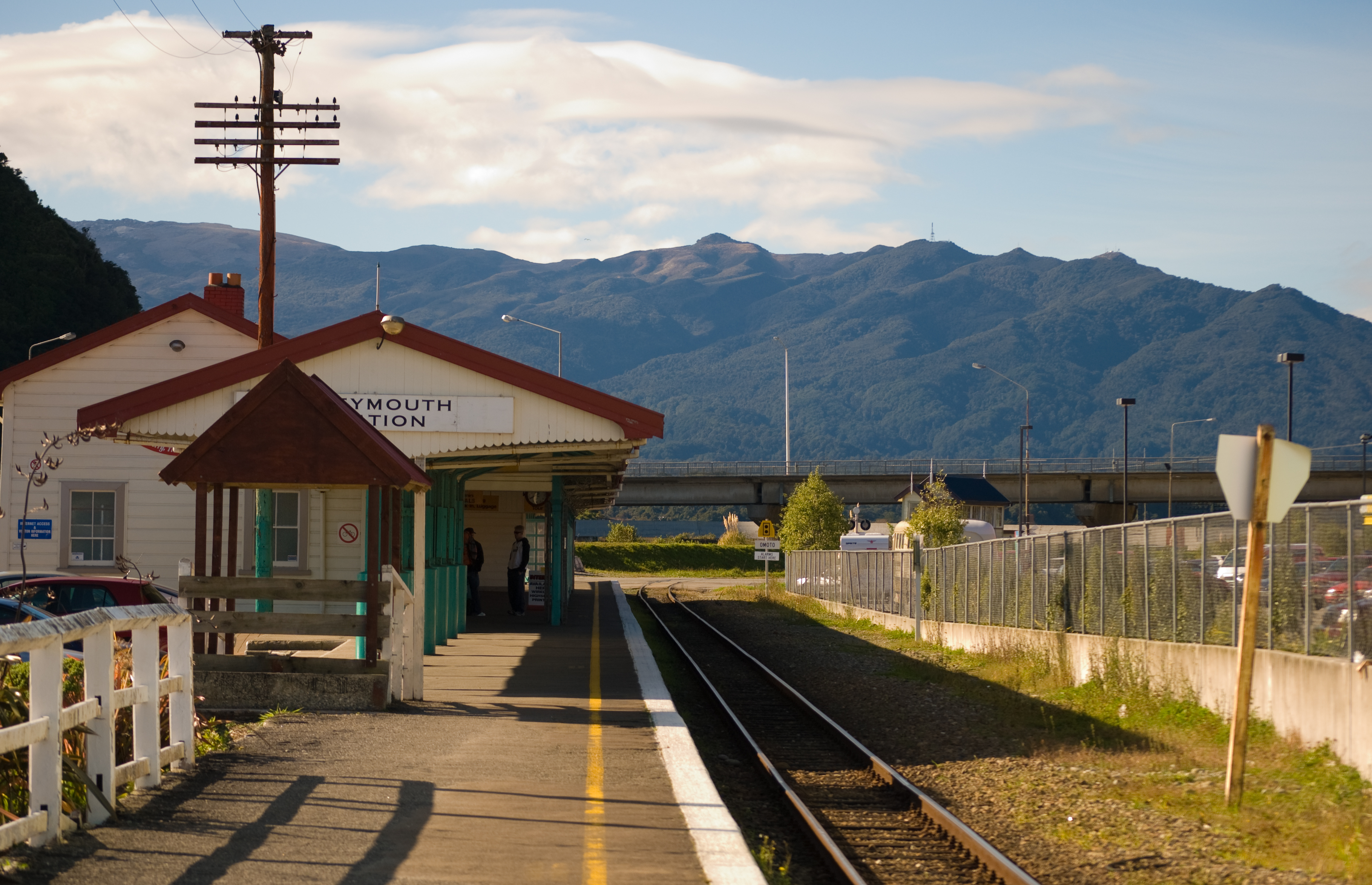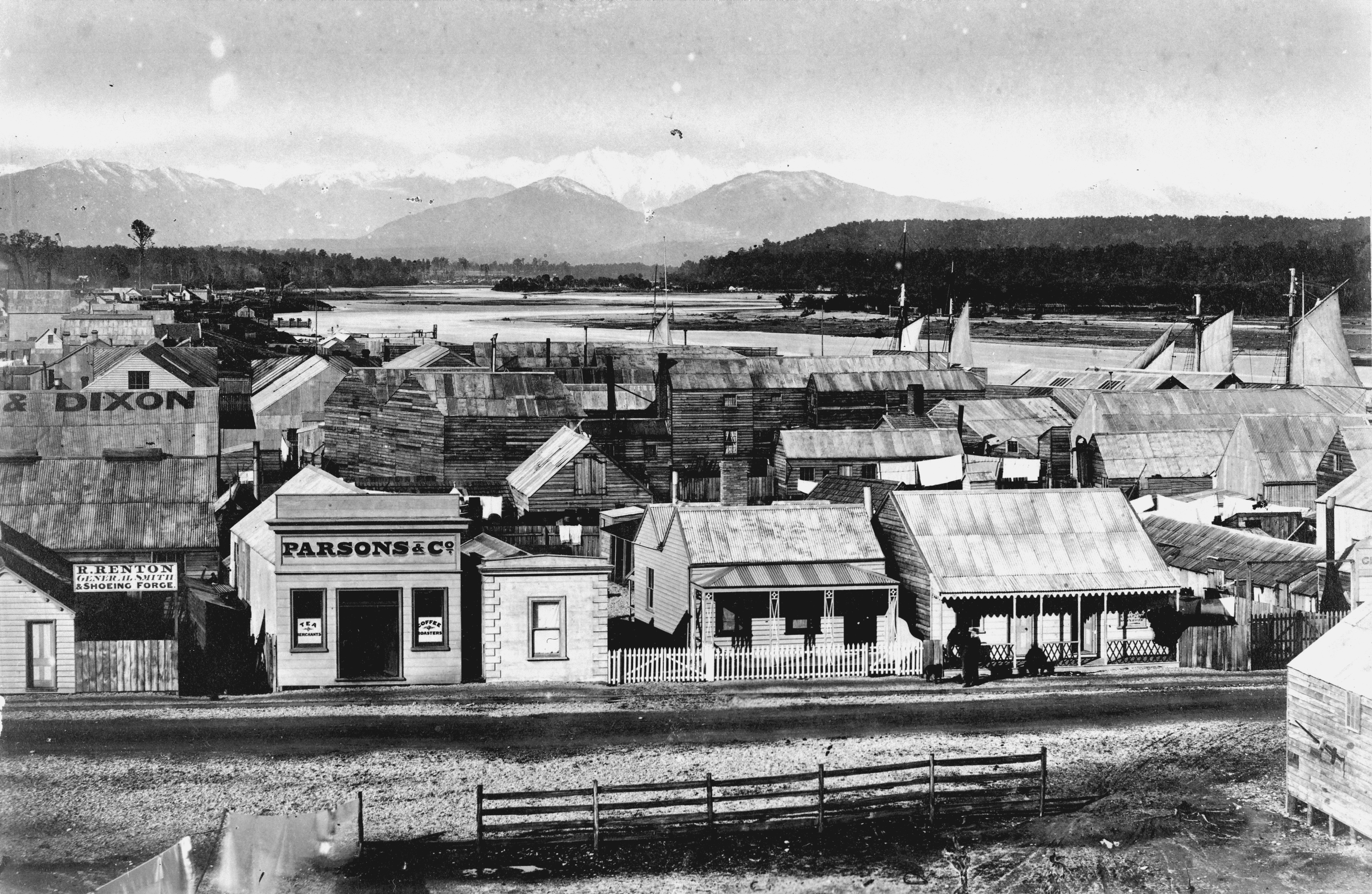|
NZR RM Class (Vulcan)
The NZR RM class Vulcan railcars were operated by the New Zealand Government Railways (NZR) in the South Island of New Zealand. All New Zealand railcars are classified as RM (Rail Motor), and this class derived their nomenclature from the name of the manufacturer, the Vulcan Foundry of Britain. Background On 9 May 1938, the Minister of Railways announced an order for ten railcars from the Vulcan Foundry of Britain. Six railcars of the Standard type were under construction at the Hutt Workshops but delays in deliveries of materials and equipment from England meant it was impracticable to build more cars in New Zealand. The order for ten more railcars was therefore placed overseas. The first Vulcan railcar arrived in New Zealand in September 1940. Three more arrived by April 1941, with all nine members in operation by the second half of 1942. Ten railcars were built, but only nine arrived in New Zealand as the ship carrying the tenth was sunk during World War II. Description ... [...More Info...] [...Related Items...] OR: [Wikipedia] [Google] [Baidu] |
The Plains Vintage Railway & Historical Museum
The Plains Vintage Railway & Historical Museum is a heritage railway and recreated historic village in the Tinwald Domain, Tinwald, New Zealand. The railway (operating as The Plains Railway) runs on approximately three kilometres of rural railway line that was once part of the Mount Somers Branch. The village and railway are open regularly to the public. The railway utilises preserved and restored locomotives and rolling stock once used on New Zealand's national railway network, while the village shows visitors how life was lived in New Zealand's pioneering past. Overview The Ashburton Railway & Preservation Society Inc. (AR&PS) was founded in 1971 with the goal of purchasing a section of the former Mt Somers Branch railway on which to run restored locomotives alongside preserving heritage farm machinery fast disappearing from the surrounding district. To meet the goal the AR&PS founded The Plains Vintage Railway & Historical Museum and began to acquire exhibits – of both ... [...More Info...] [...Related Items...] OR: [Wikipedia] [Google] [Baidu] |
Hutt Workshops
The Hutt Railway Workshops is a major railway engineering facility in the Lower Hutt suburb of Gracefield in the Wellington region of New Zealand's North Island. It is state-owned enterprise KiwiRail's only workshops, and was opened in 1930. This facility is the central motive power maintenance operation and also maintains rolling stock. History Predecessor The Hutt Workshops were preceded by a workshops at Petone, adjacent to the railway station. It operated from 1876 when first used to store the H-class "Fell" locomotives until its replacement in 1929. Decision to move In the 1920s, the problems caused by the inadequacy of some railway workshop facilities was becoming more acute. In order to examine the issue, a Royal Commission was established in 1924 consisting of English railwaymen Sir Sam Fay and Sir Vincent Raven. One recommendation of their report read: "In the North Island the shops at Napier, Whangarei, and East Town, so far as locomotive work is concerned ... [...More Info...] [...Related Items...] OR: [Wikipedia] [Google] [Baidu] |
NZR RM Class (88 Seater)
The NZR RM class 88-seaters were a class of railcar used in New Zealand. New Zealand Government Railways (NZR) classified them as RM (Rail Motor), the notation used for all railcars, numbering the 35 sets from RM100 to RM134. They were the most numerous railcars in NZR service. Their purchase and introduction saw the demise of steam-hauled provincial passenger trains and mixed trains, and was part of a deliberate effort to modernise NZR passenger services at a time of increasing competition from private motor vehicles. Being diesel powered and lighter the railcars were less expensive to operate and able to maintain quicker timetables, although became plagued with mechanical and electrical problems, with a number of the class eventually being turned into depowered locomotive-hauled carriages and reclassified as the AC class "Grassgrubs". Background In the early 1950s, NZR was in the process of replacing steam traction with diesel and modernising the railways to cope with vastly ... [...More Info...] [...Related Items...] OR: [Wikipedia] [Google] [Baidu] |
Ross, New Zealand
Ross is a small town located in the Westland District on the West Coast of New Zealand's South Island, south-west of Hokitika and north-east of Hari Hari by road. History Ross was established in the 1860s, during the West Coast Gold Rush, and became an important centre for miners. At its largest, the town had around 2,500 inhabitants, but the population declined after local goldfields were depleted in the early 1870s. Quartz was occasionally mined on Mount Greenland, a nearby ridge, but little more gold was found until two miners discovered a large 3.1-kilogram nugget in 1909, which was later named the "Honourable Roddy Nugget", after Roderick McKenzie, the Minister for Mines at the time. From 1872 to the early 1900s a number of Chinese lived and worked in Ross, and a Chinese Miners' Memorial Garden on the shore of Ross Lake commemorates them. The settlement was originally called Jones Flat, but was also sometimes known as Georgetown and Totara. It was given the name R ... [...More Info...] [...Related Items...] OR: [Wikipedia] [Google] [Baidu] |
Timaru
Timaru (; mi, Te Tihi-o-Maru) is a port city in the southern Canterbury Region of New Zealand, located southwest of Christchurch and about northeast of Dunedin on the eastern Pacific coast of the South Island. The Timaru urban area is home to people, and is the largest urban area in South Canterbury, and the second largest in the Canterbury Region overall, after Christchurch. The town is the seat of the Timaru District, which includes the surrounding rural area and the towns of Geraldine, Pleasant Point and Temuka, which combined have a total population of . Caroline Bay beach is a popular recreational area located close to Timaru's main centre, just to the north of the substantial port facilities. Beyond Caroline Bay, the industrial suburb of Washdyke is at a major junction with State Highway 8, the main route into the Mackenzie Country. This provides a road link to Pleasant Point, Fairlie, Twizel, Lake Tekapo, Aoraki / Mount Cook and Queenstown. Timaru has ... [...More Info...] [...Related Items...] OR: [Wikipedia] [Google] [Baidu] |
New Zealand Ministry Of Works
The New Zealand Ministry of Works and Development, formerly the Department of Public Works and often referred to as the Public Works Department or PWD, was founded in 1876 and disestablished and privatised in 1988. The Ministry had its own Cabinet-level responsible minister, the Minister of Works or Minister of Public Works. Historically, the state has played an important part in developing the New Zealand economy. For many years the Public Works Department (which became the Ministry of Works in 1948 and the Ministry of Works and Development in 1974) undertook most major construction work in New Zealand, including roads, railways and power stations. After the reform of the state sector, beginning in 1984, the ministry disappeared and its remnants now have to compete for government work. The Ministry of Works and Development was disestablished in 1988 and a Residual Management Unit continued to oversee the Ministry's operations and assets until formally ending in 1993. It was a ... [...More Info...] [...Related Items...] OR: [Wikipedia] [Google] [Baidu] |
Buller Gorge
The Buller Gorge is a gorge located in the northwest of the South Island of New Zealand. The Buller River flows through the deep canyon between Murchison and Westport. Land Information New Zealand lists two sections for the gorge, Upper Buller Gorge and Lower Buller Gorge. runs alongside, but considerably above, the river through the gorge. The Stillwater - Westport Line railway also runs through the gorge. New Zealand's longest swingbridge at in length spans the Buller River west of Murchison. That area also offers rides on a zip-line across the gorge Buller Gorge Swingbridge Adventure and Heritage Park website. Accessed 2013-09-18. as well as several short bush walks. The gorge and river ... [...More Info...] [...Related Items...] OR: [Wikipedia] [Google] [Baidu] |
Ross Branch (railway Line)
The Ross Branch, officially known as the Hokitika Line since 2011, and previously as the Hokitika Industrial Line, is a branch line railway that forms part of New Zealand's national rail network. It is located in the Westland District of the South Island's West Coast region and opened to Hokitika in 1893. A further extension to Ross operated from 1909 until 1980. Construction The first line opened in the region was a bush tramway built to a gauge of 1,219mm (4 ft). It ran from Greymouth south to Paroa and opened in 1867. Ten years later, an extension inland to Kumara was opened, with the Taramakau River crossed by a cage suspended from a wire. Around this time, plans were formulated to replace the tramway with a railway and link Greymouth and Hokitika. Work began in 1879, but the economic conditions of the Long Depression brought construction to a halt the next year with only 5 km of track laid. Furthermore, the residents of Kumara, led by future Prime Mini ... [...More Info...] [...Related Items...] OR: [Wikipedia] [Google] [Baidu] |
Hokitika
Hokitika is a town in the West Coast region of New Zealand's South Island, south of Greymouth, and close to the mouth of the Hokitika River. It is the seat and largest town in the Westland District. The town's estimated population is as of . On a clear day Aoraki / Mount Cook can clearly be seen from Hokitika's main street. Toponymy The name Hokitika translates from Māori as "to return directly" (from , 'to return', and , 'direct'). According to the Ministry for Culture and Heritage, the name comes from when a band of Ngāi Tahu warriors in search of greenstone were about to attack Ngāti Wairangi . The chief of the invaders drowned while trying to cross the Hokitika River, and the leaderless (army) then returned directly to their own home. History The land where Hokitika stands was purchased in 1860 from Māori when Poutini Ngāi Tahu chiefs signed the Arahura Deed. This was the sale of the whole of the West Coast region, apart from small areas reserved for ... [...More Info...] [...Related Items...] OR: [Wikipedia] [Google] [Baidu] |
Christchurch
Christchurch ( ; mi, Ōtautahi) is the largest city in the South Island of New Zealand and the seat of the Canterbury Region. Christchurch lies on the South Island's east coast, just north of Banks Peninsula on Pegasus Bay. The Avon River / Ōtākaro flows through the centre of the city, with an urban park along its banks. The city's territorial authority population is people, and includes a number of smaller urban areas as well as rural areas. The population of the urban area is people. Christchurch is the second-largest city by urban area population in New Zealand, after Auckland. It is the major urban area of an emerging sub-region known informally as Greater Christchurch. Notable smaller urban areas within this sub-region include Rangiora and Kaiapoi in Waimakariri District, north of the Waimakariri River, and Rolleston and Lincoln in Selwyn District to the south. The first inhabitants migrated to the area sometime between 1000 and 1250 AD. They hunted moa, which ... [...More Info...] [...Related Items...] OR: [Wikipedia] [Google] [Baidu] |
NZR RM Class (Midland)
The NZR RM class Midland railcar (or Leyland diesel railcar) was the first successful railcar, and first diesel-powered vehicle, to enter revenue service in New Zealand. Two were built, RM 20 and RM 21, and they ran for five years from 1936 to 1941 before being replaced by larger Vulcan railcars. They operated primarily on the Midland Line and the Greymouth-Hokitika portion of the Ross Branch These kinds of vehicles were known in some other countries by a variety of other names, including "railbuses" and "railmotors". However, such self-propelled passenger vehicles were known in New Zealand as "railcars" from the late-1920s onwards. Background The New Zealand Railways Department (NZR) had been looking for an economic means of handling regional and rural passenger traffic for over two decades. Branch lines in rural New Zealand were typically operated by mixed trains that carried both passengers and goods, and their schedules were usually slow due to the loading and unloading o ... [...More Info...] [...Related Items...] OR: [Wikipedia] [Google] [Baidu] |
Springfield, New Zealand
Springfield (until 1880 Kowai Pass) is a small town in the Selwyn District of Canterbury, in the South Island, of New Zealand. The Maori name for Springfield is Tawera. At the foot of the Southern Alps, west of Christchurch, Springfield is 9.7 km (7 minutes drive) to Sheffield. it is the most westerly town of the central Canterbury Plains. Springfield has a long association with the Midland railway line. The development of the town started around 1860. With the discovery of gold on the west coast, Springfield saw more traffic. The Springfield Hotel was first built in 1862. Rooms were added to it on a number of occasions enlarging the hotel so that it had 40 rooms. The hotel was an important coaching stop on the route to the west coast. In the 1870s, water from the nearby Kowai river was used to develop one of the earliest stock water races in Canterbury. There are a number of accounts were the name Springfield may have come. It may have been named after an American ... [...More Info...] [...Related Items...] OR: [Wikipedia] [Google] [Baidu] |

.jpg)





